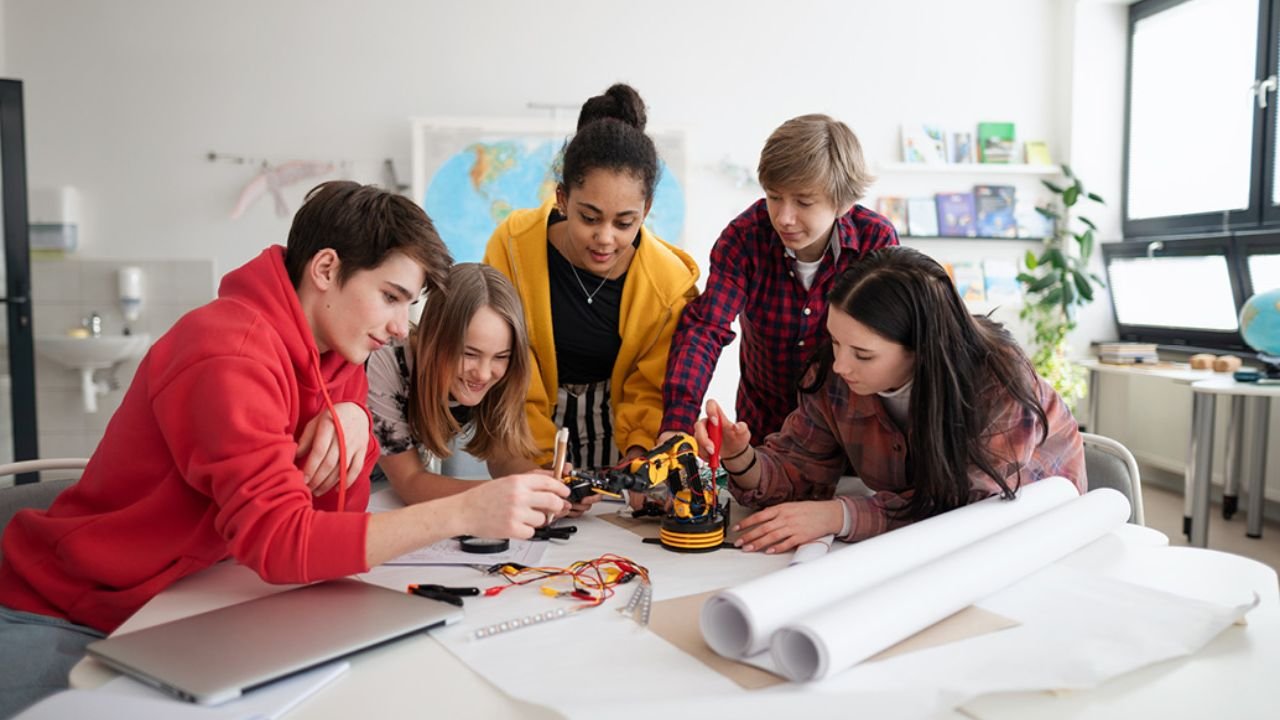With the smartphone, tablets and computer in our hands today, it is quite expected the education system must follow the footsteps of technology. Technology is no longer providing a backup ground; it has now transformed to become that rising force that has made the learning process more fascinating, encompassing and efficient can be said on behalf of both students and teachers. In this article we will learn all the details about how to integrate the technology in the classroom, what effects it has and what techniques are effective in different age groups.
What does technology integration in education mean?
Technological integration in education implies- creativity in use of technology to enhance better and effective classroom teaching. This also does not imply just the use of gadgets, but to establish the environment where students assume active roles in the studies by interlinking through supposed technological means. Whether it is a virtual classroom, video presentation or online assignments it all strives to support a good platform through which personal growth of students can take place.
Is technology adoption expensive?
A common misconception is that technology adoption will put a huge financial burden on schools. The truth is that expensive equipment is not necessary to use technology effectively. Even if schools cannot provide individual tablets to students, combining technology resources for the entire class can revolutionize student learning.
Effective ways to incorporate technology in the classroom
Teaching through PowerPoint and games
PowerPoint presentations are a great way to present any topic in an interesting way. Teachers can attract students’ attention by adding graphics, bulleted information, and YouTube video links. Educational games like Kahoot can be used for quizzes and revision in the classroom, so that every student actively participates.
Assigning homework on the Internet
Through platforms like Blackboard, Brightspace, and Moodle, teachers can post homework assignments online. This gives students instant access to content and keeps them more organized, while also improving their technical skills.
Online Grading Systems
Online grading systems like PowerSchool allow for transparent communication between teachers, students, and parents. Student attendance, marks, and report card information can be shared, allowing for continuous monitoring of progress.
Tablets and Personalized Study
Where students have access to tablets, teachers can create individualized study plans based on each student’s needs. Students can study at their own pace, building self-reliance and confidence.
Listserv and Parent Contact
Email management tools like Listserv allow teachers to stay in direct contact with parents. Newsletters, announcements, and other communications can be sent out regularly, strengthening family engagement.
Strategies for adopting technology according to age
Elementary
For young children, technology can be a fun and interactive way to strengthen fundamental skills (such as spelling, reading, math). Platforms like Spelling Training give children the opportunity to learn words through pronunciation, games, and quizzes, which parents can continue at home.
Middle School
At this age, students begin to develop independent thinking. Tools like Easy Bib teach them how to research on the Internet and properly cite sources. This not only teaches them academic integrity but also practical life skills.
High School
In high school, students can be taught Microsoft Office, Google Drive, spreadsheets, and creating presentations. All of these skills prove useful not only in college but also in the job. Capabilities such as document sharing, feedback, and teamwork are also developed through this medium.
Importance of incorporating technology in the classroom
Keeping students engaged
It is challenging to keep the interest and attention of today’s students. Technology turns this challenge into an opportunity. When students watch videos, play games, or take quizzes, they feel more engaged.
Supporting different learning styles
Every student has a different learning pace and style. Through technology, teachers can create personalized content and learning paths – so that every student gets an opportunity to learn according to his or her ability.
Development of life skills
Technology has become an essential literacy in today’s world. By teaching students to create Excel sheets, send emails, and share online documents in school itself, we can prepare students for future responsibilities.
Conclusion: The classroom of the future starts today
The right and balanced use of technology makes education more vibrant, inclusive, and effective. While some critics may say that technology is a distraction, when implemented in a planned manner, its benefits outweigh its limitations. If teachers, schools, and parents work together to use it wisely, it can positively change the landscape of education.
